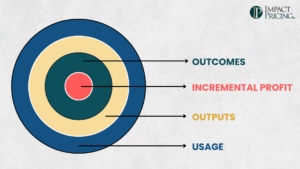Customers’ willingness to pay is always a function of their perception of value. Always!
The problem is value is such an ambiguous concept. How much does someone value a blue shirt? How much does someone value having a shirt? As these two questions show, in B2C markets, value is unusably vague.
However, in B2B markets, we have this incredible concept of Power of Economic Value. This is how much additional profit you will make for the company. We typically think of this as how much you will make or save your customer.
In some cases, economic value is obvious. If I’m selling a new piece of manufacturing equipment, it can be readily apparent that the customer will be able to make more products and hence more profit. The customer can probably do that math pretty easily. If I’m selling a process to make the customer more efficient, they can probably calculate the cost savings, at least some of them.
In some cases, the power of economic value is less obvious. If we are selling a product that improves our customers’ employee satisfaction, that doesn’t easily turn into dollars. But it can be. Higher employee satisfaction leads to lower turnover which can be quantified in money.
What I LOVE about B2B sales is almost everything we sell can be translated into dollars in our customers’ pockets. Why don’t companies, and especially salespeople, do this? When we help our buyers understand how much value they will receive, they are less price-sensitive and our relationship is stronger. These result in higher win rates at higher prices. Wow.
To learn more about communicating value effectively to your customers, stay tuned to future blogs. Or, if you can’t wait, you can buy my newest book, Selling Value: How to Win More Deals at Higher Prices on Amazon.
Now, go make an impact!















